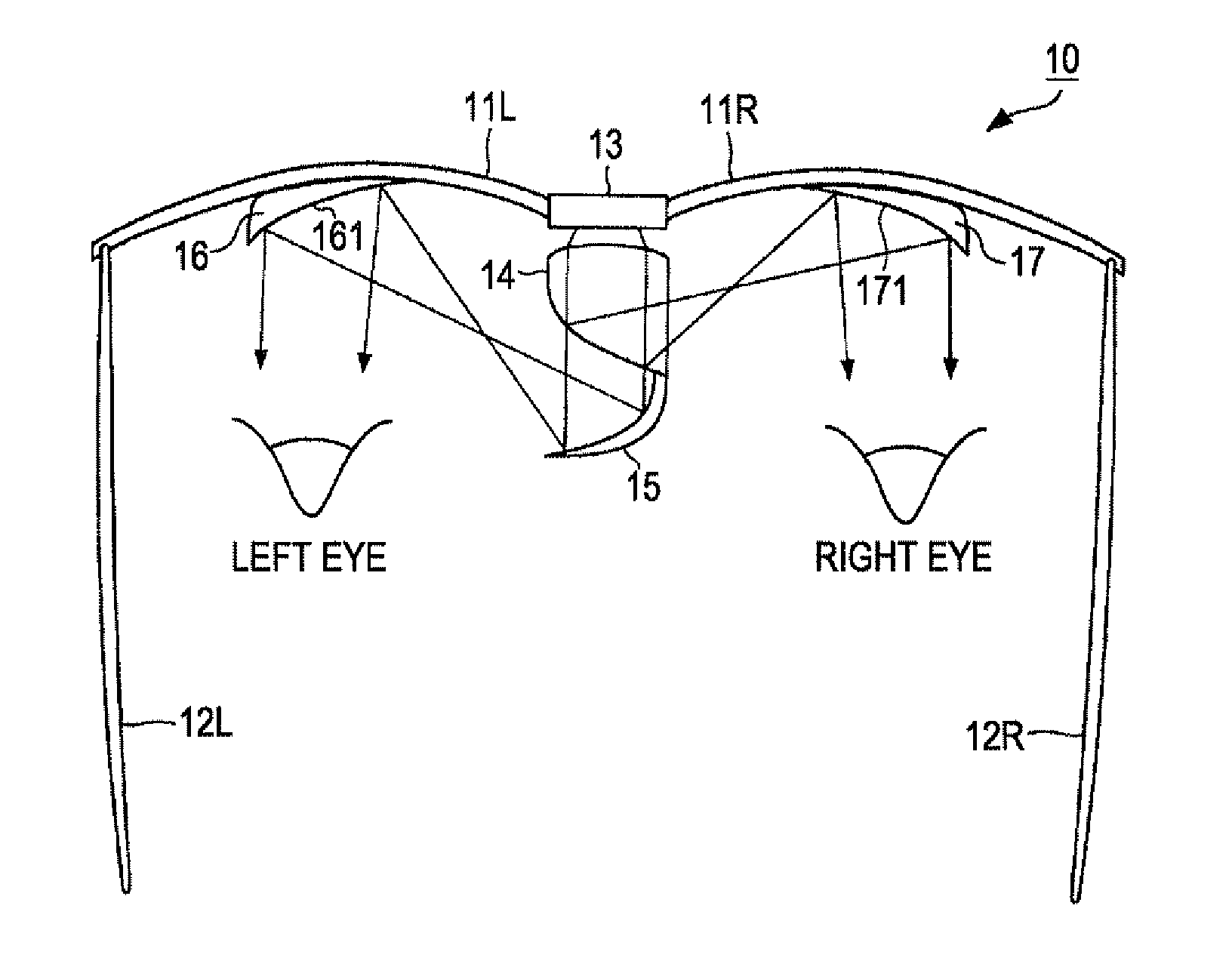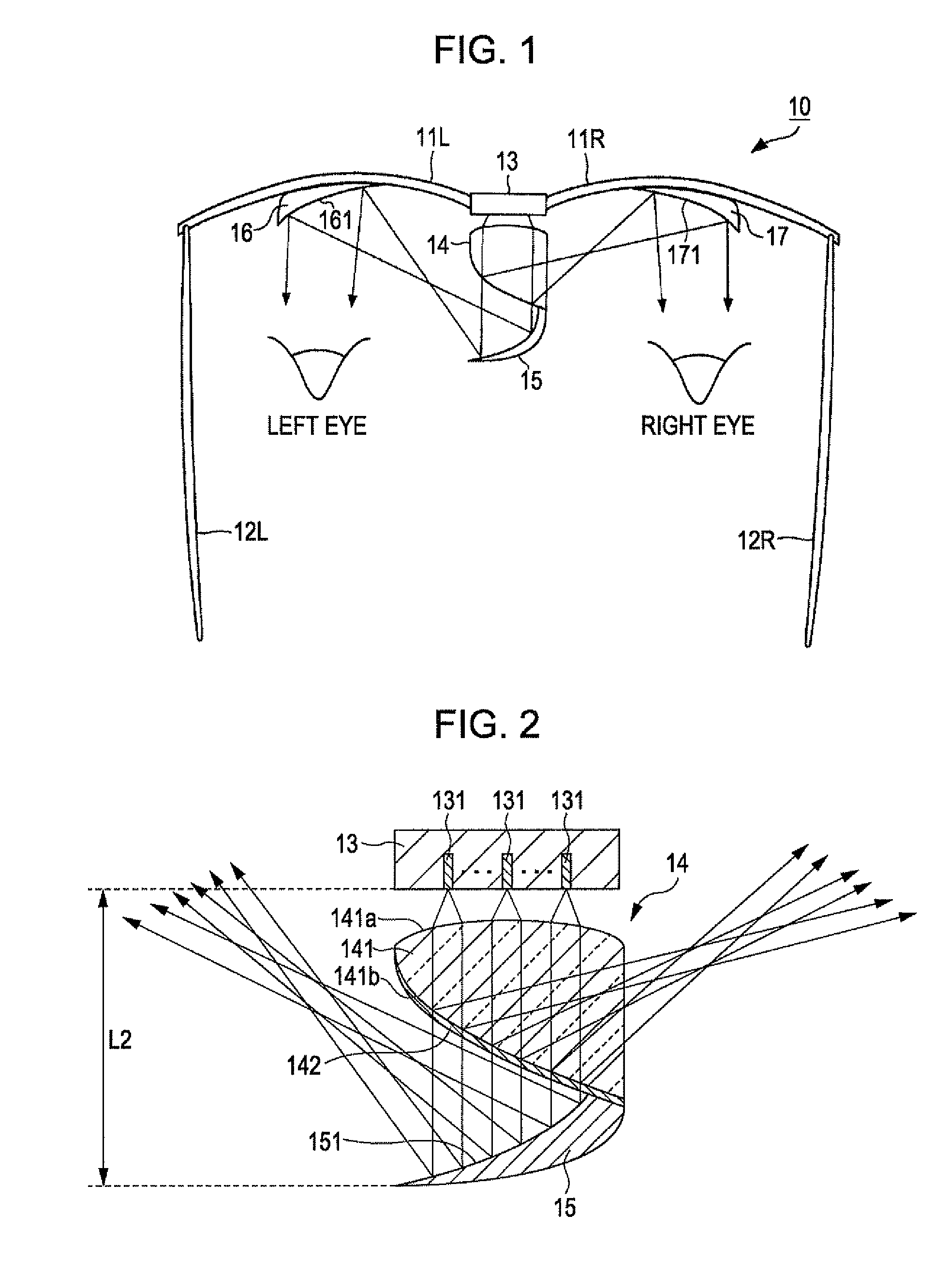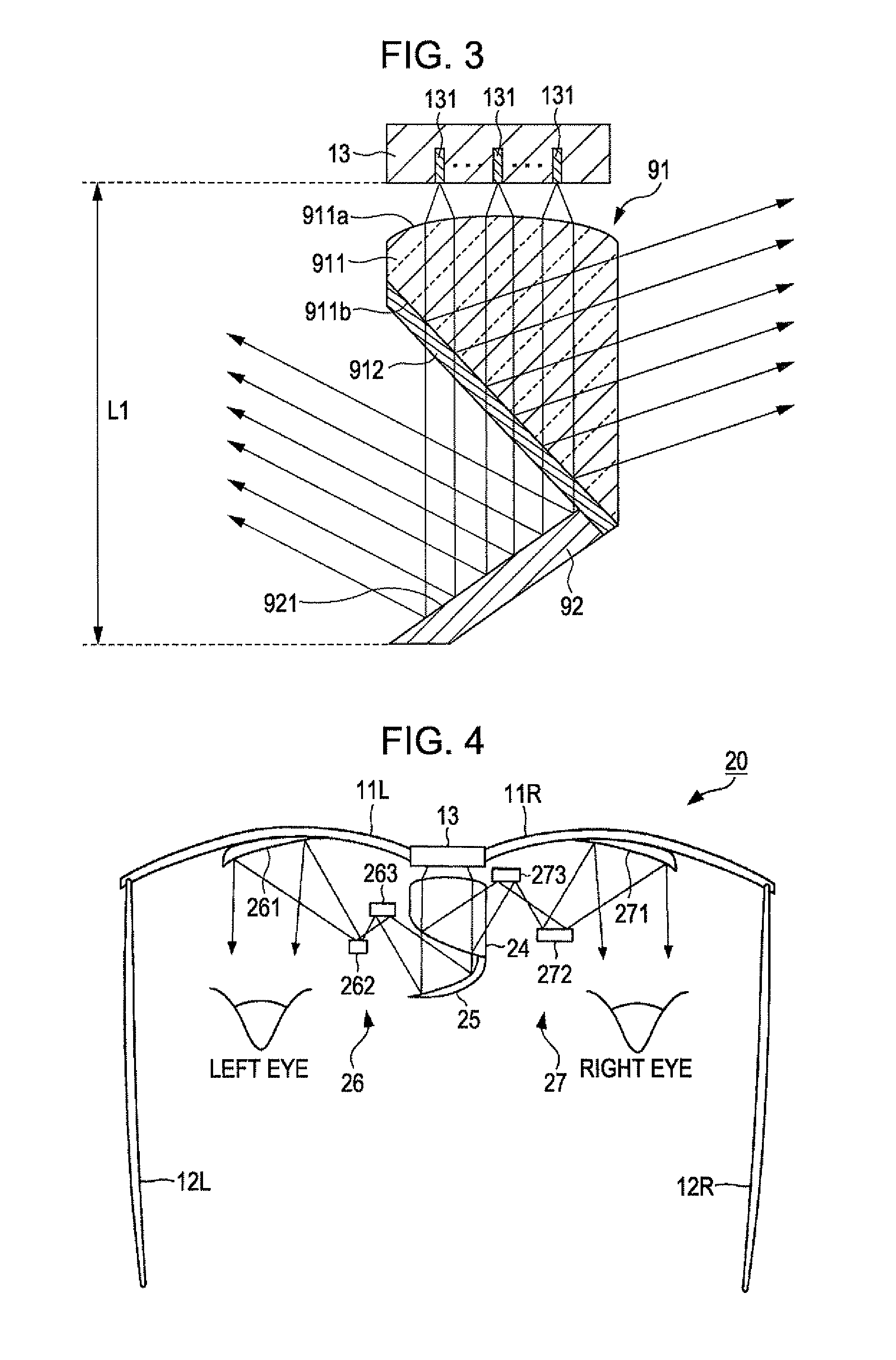Head mounted display
a display and head technology, applied in the field of head mounted displays, can solve the problems of difficult to reduce the size of the head mounted display, the reduction of the hmd in size cannot be achieved, and the difficulty of sufficiently reducing the hmd in size, so as to achieve easy arranging, high accuracy, and high accuracy
- Summary
- Abstract
- Description
- Claims
- Application Information
AI Technical Summary
Benefits of technology
Problems solved by technology
Method used
Image
Examples
first embodiment
[0021]FIG. 1 is a plan view illustrating an HMD 10 according to the first embodiment of the invention. The HMD 10 is an eyeglass-shaped display apparatus, which is to be mounted on a person's head. The HMD 10 includes a lens 11L corresponding to the left eye, a lens 11R corresponding to the right eye, a temple portion 12L which rests on the left ear and a temple portion 12R which rests on the right ear. Although the lenses 11L and 11R may be transparent, the lenses 11L and 11R are opaque in this embodiment. The temple portion 12L is attached to the left end of the lens 11L and the temple portion 12R is attached to the right end of the lens 11R.
[0022]Further, the HMD 10 includes a plate-shaped display unit 13 between the lens 11L and the lens 11R. The display unit 13 outputs light to the side of the head so as to display an image. The lens 11L is attached to the left end of the display unit 13, and the lens 11R is attached to the right end of the display unit 13. Further, a nose pad ...
second embodiment
[0038]FIG. 4 is a plan view illustrating a configuration of an HMD 20 according to the second embodiment of the invention. The HMD 20 is different from the HMD 10 only in that the HMD 20 includes an optical unit 24, a concave mirror 25, a first optical system 26, and a second optical system 27 in place of the optical unit 14, the concave mirror 15, the first optical system 16, and the second optical system 17. In the embodiment, the traveling direction of reflected light from the concave mirror 25 is referred to as “first direction” and the traveling direction of reflected light from the optical unit 24 is referred to as “second direction.”
[0039]The first optical system 26 is constituted by a plurality of optical parts. That is to say, the first optical system 26 is constituted by a total reflection mirror 261, a total reflection mirror 262, and a total reflection mirror 263. The total reflection mirror 261 has a reflecting surface which is concave. The total reflection mirror 262 h...
third embodiment
[0045]FIG. 5 is a plan view illustrating a configuration of an HMD 30 according to the third embodiment of the invention. The HMD 30 is different from the HMD 20 only in that the HMD 30 includes lenses 31L and 31R, a first optical system 36, and a second optical system 37 in place of the lenses 11L and 11R, the first optical system 26, and the second optical system 27.
[0046]The lenses 11L and 11R are transparent. For example, the lenses 11L and 11R are formed with glasses. The first optical system 36 is different from the first optical system 26 only in that the first optical system 36 includes a half mirror 361 having the same shape and the same size as those of the total reflection mirror 261 in place of the total reflection mirror 261. The second optical system 37 is different from the second optical system 27 only in that the second optical system 37 includes a half mirror 371 having the same shape and the same size as those of the total reflection mirror 271 in place of the tot...
PUM
 Login to View More
Login to View More Abstract
Description
Claims
Application Information
 Login to View More
Login to View More - R&D
- Intellectual Property
- Life Sciences
- Materials
- Tech Scout
- Unparalleled Data Quality
- Higher Quality Content
- 60% Fewer Hallucinations
Browse by: Latest US Patents, China's latest patents, Technical Efficacy Thesaurus, Application Domain, Technology Topic, Popular Technical Reports.
© 2025 PatSnap. All rights reserved.Legal|Privacy policy|Modern Slavery Act Transparency Statement|Sitemap|About US| Contact US: help@patsnap.com



